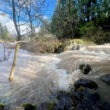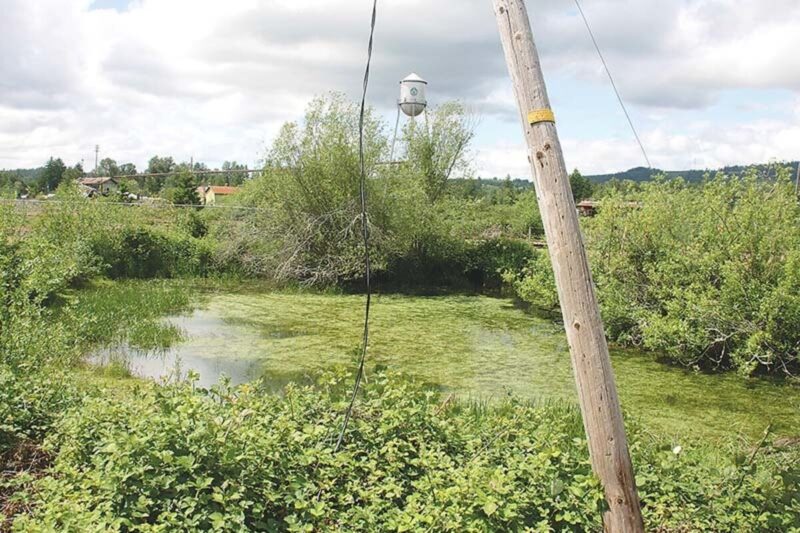Sean C. Morgan
An increase in the city’s storm water drainage fee will help pay for ongoing maintenance and allow the city to accumulate enough funds to pay for improvement projects in coming years.
The Sweet Home City Council is considering an increase in its storm water drainage charge from $1 to $3 per equivalent dwelling unit – or one house. It has not increased the rate since it created the charge in 2008. At the time the city implemented the charge, a consultant had recommended a rate of $4 per EDU. Storm water drainage is part of the city’s monthly utility bill that includes water and sewer charges.
At the current rate, the city anticipates $62,000 in revenues for the 2019-20 fiscal year if the rate remains at $1. The city is budgeting $106,000 in storm water drainage expenditures. With the increase, it is budgeting $186,000 in revenue.
Among projects proposed in the 2019-20 budget is an improvement to the system around the intersection of 38th Avenue and Long Street.
The drainage system is a citywide network of ditches, swales, catch basins and pipes that run storm water into the local streams and rivers. The swales provided minimal treatment, removing oils, heavy metals, debris and grit. The western side of Sweet Home tends to have most of its drainage handled by pipes and catch basins, while much of the eastern end of Sweet Home tends to use ditches and swales.
Much of the water between 5th and 8th avenues runs to a pipe that empties into Ames Creek at the bridge, for example.
The drainage system itself, “it’s not good, like most of our infrastructure,” said Public Works Director Greg Springman. “There hasn’t been adequate funding in the past.”
What has been done has been in response to developments or intersections with problems, Springman said.
In the past, Public Works has had a “fix-it” mentality as issues come up, said Operations Manager Dominic Valloni. In the last couple of years, Public Works has been more proactive in dealing with issues, but funding has been limited to the $50,000 to $60,000 range.
“When you look at how much we spend, I bet we spend a lot more on it from streets and collections,” Valloni said. Collections deals with issues in the pipes, while streets handles issues with ditches. Much of the regular maintenance is removal of vegetation from the ditches.
The development of individual properties can cause drainage issues, Springman said. When a property owner develops, it changes the topography, and the water moves in different directions.
“When these types of things happen and there is not a dedicated improvement district or dedicated full development,” Springman said, when the storms arrive, “it’s on Public Works to respond in the best interests of everybody.”
Public Works has developed a five-year capital improvement plan, Springman said. As part of that plan, the city had to work with the Oregon Department of Environmental Quality to include projects to reduce total mass loading in storm water.
In the past, city efforts have helped meet the DEQ’s goals, including the new leaf pickup program, warning stickers at each catch basin warning the public not to dump anything into them, the street sweeper and bags for picking animal waste at the parks.
“The idea is to keep (storm water) from getting as dirty in the first place,” said Engineering Technician Trish Rice.
The stakes get higher when the city hits a population of 10,000.
“We’ll be required to have more programs,” Rice said. “You do the same five-year plan, but the DEQ looks at it more vigorously and expects you to do a lot more.”
For storm water drainage, Public Works has identified two projects, Springman said. The first is the development of a master plan for the utility. The second is the project proposed at 38th and Long.
The 38th and Long project includes an area where the city received ownership of unimproved roads from Linn County.
The inspections at the time they were county roads may not have been as good as it should have been, Valloni said. It has driveways with no grade. Culvert sizes vary from driveway to driveway, where a 12-inch culvert is warranted, the line may have an 8-inch culvert. The differences from one property to the next mean flooding for quite a few properties when the water is not able to drain away from the area.
Ideally, projects will coincide with projects in other parts of the infrastructure, with street, water and wastewater repairs and improvements completed at the same time, Springman said, but on the unimproved streets, without curbs and gutters, the city can take on some projects.
That’s important to help preserve the roadways as water on the edge of the street can cause the condition of the street to deteriorate, Valloni said. The potholes, cracks and water that pools at the side of Tamarack Street east of 12th Avenue is an example of the damage it can cause.
The ultimate fix is installing curbs, gutters and catch basins, Springman said, but “that’s not going to happen here. Three dollars is just a step in that direction.”
“The $3 is going to help take some of the pressure off the collections and the streets,” Valloni said. The city will need to balance spending funds each year with building up enough cash for larger projects.
When the city is able to contract with an engineer and bring on another engineering technician, it will be able to start moving on a number of projects, including streets and drainage, Springman said.
Public Works is looking at the area around 42nd Avenue in 2020-21, Valloni said, but funding is indeterminate at this point.
Not all drainage issues are the responsibility of Public Works.
During the recent major rain storm, water was coming out of a catch basin at 1st Avenue and Highway 228, Valloni said. The city received four calls about that – and it needs improvement – but it belongs to the Oregon Department of Transportation, and the city cannot address it.
In the recent storm, Sweet Home did really well, Valloni said. Public Works received calls about a couple of blocked culverts, one of them on private property with no utility easement. The property owner allowed Public Works to address it.
Keeping catch basins open is important to keeping the system functioning. Rice said Public Works receives numerous reports through the city’s 311 reporting system and phone calls of blocked catch basin grates.
That’s something that happens during the first rain usually, Springman said.
Every year, for nearly two decades, it’s been “almost all hands on deck,” Valloni said.
Helping keep the system clear is the street sweeper, which removes silt and pollutants from the streets and prevents them from entering the drainage system, he said. We do a lot more street sweeping than we have in the past.”
In a month, the street sweeper covers 300 to 400 miles of city streets, Rice said.
It runs through town every third week of the month and the downtown area every week, Valloni said.





